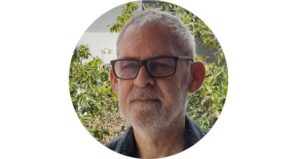
Residency period: March 4th to December 31st, 2024
Faculty of Languages, Literature, and Linguistics (FALE)
Tommaso Raso has a degree in Literature and Philosophy (1988) and a PhD in Modern Philology (1994) from the Università de Napoli Federico II. He has postdoctoral studies at UFRJ, Unicamp and the University of Florence. He was Teachng Associate at the University of California at Los Angeles, UCLA (1988-1990), professor at the University of Napoli L’ Orientale (1993-96) and Associate Professor of Italian Linguistics at the Università de Venezia, Ca’ Foscari (1996-2004 ). Since 2004 he has been a professor at UFMG, where he has held a degree in Linguistics since 2012. He coordinates the Laboratory for Empirical and Experimental Studies of Language (LEEL) at the Faculty of Languages, Literature, and Linguistics (FALE). He coordinated the activities of the Luso-Brazilian Association of Speech Sciences (LBASS) from 2020 to 2022. He coordinates agreements between UFMG and the Università di Firenze, the Università di Napoli Federico II and the Università di Napoli L’ Orientale. He is scientific director of the “Linguistics for higher education” Collection at Editora “Parabola”. He has worked in the areas of Philology and Historical Linguistics, Corporal Linguistics and Speech Studies. He works mainly with the study of the informational structure and illocutions in spontaneous speech corpora and coordinates the projects C-ORAL-BRASIL (compilation of spontaneous speech corpora from BP) and C-ORAL-ESQ (compilation of schizophrenic speech corpora) .
COMPILATION OF THE C-ORAL-ESQ CORPUS AND THE STUDY OF SPEECH, GESTURES AND FACIAL EXPRESSIONS OF PATIENTS WITH SCHIZOPHRENIA: EXTRACTION OF RELEVANT MEASUREMENTS
The project is part of a larger project to compile corpora (audio and audio and video) and study spontaneous speech in Brazilian Portuguese (C-ORAL-BRASIL project, coordinated by T. Raso and H. Mello). The objective of this project is the compilation and study of multimodal corpora of patients with schizophrenia. In particular, the project envisages the completion of the C-ORAL-ESQ corpus, consisting of audio recordings of interactions between patients and doctors at the Instituto Raul Soares and the Hospital das Clínicas, and the partial compilation of a multimodal corpus of the same type of interaction. Based on these data, the project proposes to analyze some aspects of patients’ speech in comparison with non-pathological speech. Some information to be analyzed can be extracted automatically or semi-automatically, while others require the annotation work of a trained team such as that of the Laboratory for Empirical and Experimental Studies of Language (LEEL) at the Faculty of Arts at UFMG. Measures can be automatically extracted that compare schizophrenic and non-pathological speech regarding (i) duration of turns (in time, utterances and words); (ii) complexity in the prosodic-informational structure of utterances; (iii) number of facial action units per utterance; (iv) type of action units used and their intensity. The main measurements that require human annotation to be extracted are: (i) quantification of the type of informational units present; (ii) the evaluation of functional prosodic prominences from an informational point of view; (iii) the quantity and quality of manual gestures per utterance; (iv) the relationship between action units and informational prominences.